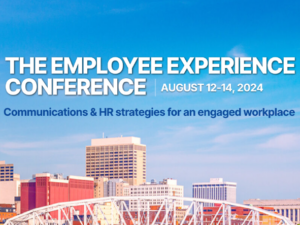Tips for reaching, recruiting and retaining top talent
If you’re keen to keep employees engaged–and avoid falling victim to “The Great Resignation”–follow this advice.

As lower labor participation rates persist and more job openings become available, the competition for top talent is intensifying.
Job postings are up 28.6% from Feb. 1, 2020, the pre-pandemic baseline, according to U.S. News and World Report. The increasing number of open positions, coupled with rising voluntary employee turnover, is creating a perfect storm for employers. In fact, a recent survey by global staffing firm Robert Half found that nearly 1 in 3 employees (32%) said they plan to look for a new role in the next several months. What can companies do to reverse these alarming trends?
Firms that want to win the war for top talent must develop smart strategies for reaching, recruiting and retaining potential employees. Here’s how to do just that:
Reaching top talent
Attracting exceptional employees today requires more than just listing openings on job posting platforms.
Firms should focus on using social networks to reach potential employees. Leveraging social media networks, companies can build their brand and showcase their organization as a great place to work. A survey by LinkedIn revealed that 75% of job seekers consider an employer’s brand before even applying for a job.
Posting photos and videos of company events, employee achievements, employee volunteer programs and HR initiatives are just some of the ways firms can use social media platforms to reach job candidates and stand out from the crowd. Research shows that social media is an effective strategy for reaching employees. Consider that leads developed through employee social media activities convert seven times more frequently than other leads.
Video content featured on social media channels is essential to reaching job seekers. According to HubSpot, “Nearly nine out of 10 people report wanting to see more videos from brands in 2021, making video an excellent tool for lead generation and brand awareness.”
Video content allows companies to connect and engage with prospective employees more deeply. Not only can video marketing showcase company culture, explain what the company does and highlight employee activities and events, video can be used to promote job openings. Recently at Uproar, we hired Sugary Ray’s Mark McGrath for a hiring video to promote a job opening as a creative way to attract attention and stand out from other run-of-the-mill job postings.
Recruiting top talent
Firms that effectively communicate what makes their culture strong and unique will attract and engage the best talent.
For job seekers, culture fit is foundational to selecting the right job, and for employers culture fit is essential to engaged, loyal employees. As much as 80% of employee turnover is the result of bad hiring decisions, and bad hiring decisions are often a result of not adequately considering culture fit. Employees who are a culture fit are happier, and they tend to work more easily and seamlessly with colleagues and contribute more quickly.
Highlighting company culture through employee testimonials that describe firsthand experience with the culture and values of an organization can help job seekers understand and relate to the culture–and show them why they should join a company. A strong and authentic employee-centered culture that reflects diversity and inclusion is also key for attracting talent.
Employees can also play a role in recruiting great candidates. Employees have an understanding of company needs and culture that make them great ambassadors. They can help recruiting efforts by spreading the word about job openings among friends, former colleagues and family who might be qualified and interested in the position, as well as by reposting job vacancies to their social networks. To help drive employee referral programs, firms can offer rewards such as cash incentives for referrals that result in successful hires.
Retaining top talent
Flexible working options including remote work are key to retaining top talent. In fact, a survey by Zapier found that 74% of respondents would be willing to quit a job to work remotely, and 26% of respondents indicated they have quit a job for one that allows remote work.
Work-life balance is essential to employee job satisfaction and by extension essential to retaining talent. A report by the Work Institute revealed that one of the top categories for leaving a job was work-life balance. With remote and hybrid working models blending work into home life, employers will need to encourage this balance by making sure employees are taking breaks to avoid burnout and making family a priority.
Professional development is another major factor in talent retention. Employees value opportunities to develop new competencies and grow within an organization. Firms should make it a priority to invest in employees’ professional development by providing in-house training sessions, encouraging employees to attend conferences and industry events, and providing tuition reimbursement.
Providing opportunities to develop and achieve professional goals is particularly important for retaining younger employees. The survey by Robert Half found that 55% of Gen Z employees (ages 18 to 24) plan to pursue a new job, 32% said the main reason is due to lack of professional development opportunities at their current company.
Today, competing for top talent is a major priority for companies in all sectors. Outdueling competitors requires a focus on the three R’s: reaching, recruiting and retaining. Those who prioritize the three R’s will be in a great position to thrive in a post-pandemic environment.
Idalia Dillard is vice president of human resources and operations at Uproar PR, a full-service public relations agency with service offerings in media relations, social media, and thought leadership.






